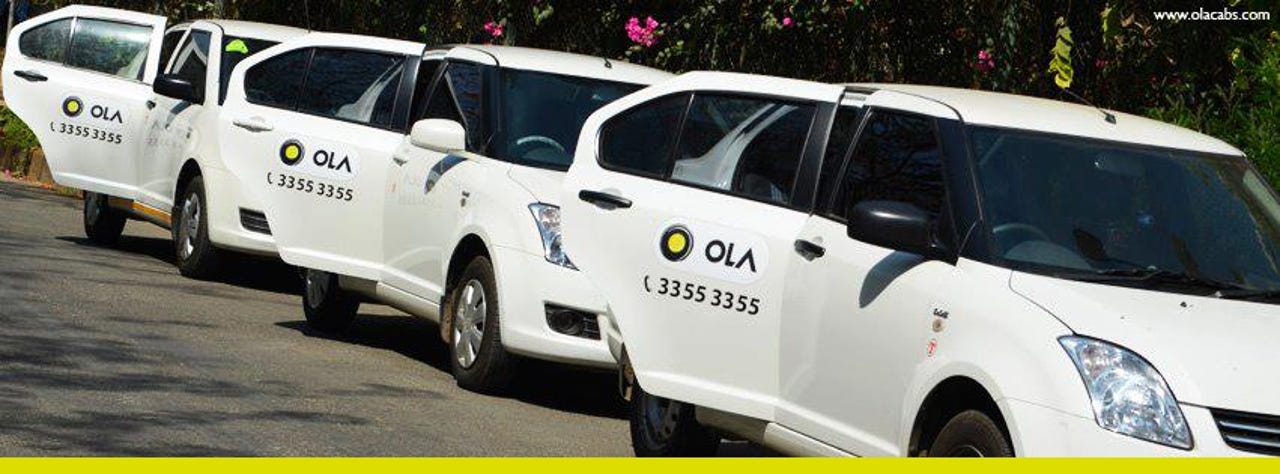OlaCabs steamrolls Uber with acquisition of TaxiForSure

The humble taxi in India has received a makeover. In many Indian cities, including New Delhi, you can still call your neighbourhood taxi stand, where the half-asleep owner with whom you've had a telephonic relationship for years will remember you by name and address and make sure that one of his loyal lieutenants (who you also know) will get to your house within five or 10 minutes.
Often, there are no cabs available. Sometimes, the cabs just don't show up. But when they do, an Ambassador car the size of a tank and swathed in green, black, and yellow signalling its eco credentials (thanks to a CNG tank in the back) will lumber onto your street, give you two toots of its horn, and whisk you away to your destination while plying you with local gossip and a warm, familiar feeling called reassurance.
Those days are almost over. The Ambassador car has halted production, and the old-guard taxis are facing a hostile takeover by the new breed, powered by nothing much more than a smartphone app. The most ferocious of this lot in India is none other than domestic steed OlaCabs, which has proven relentless in its rise and promises to steamroll over all other competitors given its current scorching pace.
Its coming of age was underscored a few days ago, when it announced that it would be acquiring another home-grown rival, TaxiForSure, for $200 million (Rs 1,260 crore), making it a clear leader in the the world of cab app companies and upgrading its market cap nicely from $1 billion to $2 billion. It is also the second-biggest M&A deal in e-commerce, after Flipkart's acquisition of fashion etailer Myntra in a $330 million deal last year.
In the world of internet investing, a few months is a trifle, enough to render incidents ancient and almost forgotten. Right after Japan's SoftBank ploughed $210 million into Ola in October last year, an Uber driver allegedly raped a woman in Delhi in early December, thus putting the brakes on its increasing popularity in the country and rocking the world of app-powered taxi services. A few days later, Uber, Ola, and TaxiForSure, along with 27 other services, were banned in the capital city. There was no entity as maligned as an Uber-like taxi service, and it was generally thought that for at least the short term, these services were toast.
Not quite, apparently. According to reports, the Delhi government has discovered that many app-powered taxi services are still cruising along Delhi roads, conducting business in violation of the ban. It is more of a testimony to the demand for these convenient services than anything else; the taxi industry in India is worth $10 billion, but only 5 percent of it is organised, according to some reports. Moreover, banning an app-powered taxi service is not an easy task, since all decisions are conducted in the world of bits and bytes. In order to block a service, you would be forced to also block a whole host of other services, which would have its own undesired backlash.
Latest news on Asia
With the TaxiForSure acquisition, Ola will add 15,000 cars in 47 cities to its 100,000 cabs across 67 cities -- which means that an overlap is unavoidable. But for now, both services will run on their own brands. This merger will reinforce OlaCabs as the undisputed heavyweight in India, with around a 75 percent share, versus Uber's approximately 5 percent.
But ironically, it is the global juggernaut Uber that OlaCabs has to thank for its current avatar, according to Tech in Asia. It sports an app-sharing, internet-enabled aggregator model that Uber popularised, but has also retained its primary differentiator: An in-ground physical presence with phone numbers to dial (versus Uber's online-only presence), and the ability to take multiple forms of payment, including cash (versus Uber's credit card-only policy). Now, TaxiForSure brings with it an economy segment that offers the economy-sized Tata Nano as an option. Even autos in cities like Banguluru have been roped in to offer services under the OlaCabs rubric, armed with GPS systems. OlaCabs contends that it is this localisation that makes a battle between it and Uber a no-contest.
With OlaCabs on the ascendancy, and the ability to fulfil the "physical presence" mandate prescribed by the Indian government for appropriate licences that will allow it to continue to legally function, the pressure is now on Uber. For a company that exists around the world as mainly an online presence, changing its business model could prove to be extremely problematic.
In India, where smartphone adoption is still only 30 percent and regulations and risk keep cropping up, a glance at neighbouring China offers a glimpse of the promise ahead. Just last month, China's largest taxi-hailing app Didi Dache merged with its closest competitor Kuaidi Dache (in which SoftBank is an investor) to form a $6 billion entity.
So while the future of mobile and mobile apps in terms of economic viability is still very hazy, as Andreessen Horowitz's Ben Evans pointed out recently, and the spectre of regulations and rogue drivers keeps hovering over app-powered cab companies, the above statistic if nothing else should help keep OlaCabs rolling along.